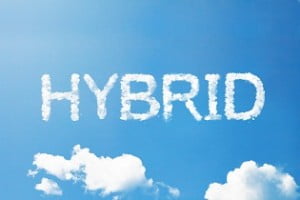

This week has seen a number of hybrid cloud deals which would suggest the industry is making significant progress delivering the platforms, services and tools necessary to make hybrid cloud practical. But if anything they also serve as a reminder that IT will forever be multimodal which creates challenges that begin with people, not technology, explains Ovum’s principle analyst of infrastructure solutions Roy Illsley.
There has been no shortage of hybrid cloud deals this week.
Rackspace and Microsoft announced a deal that would see the hosting and cloud provider expand its Fanatical Support to Microsoft Azure-based hybrid cloud platforms.
Google both announced it would support Windows technologies on its cloud platform, and that it would formally sponsor the OpenStack foundation – a move aimed at supporting container portability between multiple cloud platforms.
HP announced it would expand its cloud partner programme to include CenturyLink, which runs much of its cloud platform on HP technology, in a move aimed at bolstering HP’s hybrid cloud business and CenturyLink’s customer reach.
But one of the more interesting hybrid cloud stories this week came from the enterprise side of the industry. Copper and gold producer Freeport-McMoRan announced it is embarking on a massive overhaul of its IT systems. In a bid to become more agile the firm said it would deploy its entire application estate on a combination of private and public cloud platforms – though, and somewhat ironically, the company said the entire project would wrap up in five years (which, being pragmatic about IT overhauls, could mean far later).
“The biggest challenge with hybrid cloud isn’t the technology per se – okay, so you need to be able to have one version of the truth, one place where you can manage most the platforms and applications, one place where to the best of your abilities you can orchestrate resources, and so forth,” Illsley explains.
Of course you need all of those things, he says. There will be some systems that won’t fit into that technology model, that will likely be left out (i.e. mainframes). But there are tools out there to fit current hybrid use cases.
“When most organisations ‘do’ hybrid cloud, they tend to choose where their workloads will sit depending on their performance needs, scaling needs, cost and application architecture – and then the workloads sit there, with very little live migration of VMs or containers. Managing them while they sit there isn’t the major pain point. It’s about the business processes; it’s the organisational and cultural shifts in the IT department that are required in order to manage IT in a multimodal world.”
“What’s happening in hybrid cloud isn’t terribly different from what’s happening with DevOps. You have developers and you have operations, and sandwiching them together in one unit doesn’t change the fact that they look at the world – and the day-to-day issues they need to manage or solve – in their own developer or operations-centric ways. In effect they’re still siloed.”
The way IT is financed can also create headaches for CIOs intent on delivering a hybrid cloud strategy. Typically IT is funded in an ‘everyone pitches into the pot’ sort of way, but one of the things that led to the rise of cloud in the first place is line of businesses allocating their own budgets and going out to procure their own services.
“This can cause both a systems challenge – shadow IT and the security, visibility and management issues that come with that – and a cultural challenge, one where LOB heads see little need to fund a central organisation that is deemed too slow or inflexible to respond to customer needs. So as a result, the central pot doesn’t grow.”
While vendors continue to ease hybrid cloud headaches on the technology front with resource and financial (i.e. chargeback) management tools, app stores or catalogues, and standardised platforms that bridge the on-prem and public cloud divide, it’s less likely the cultural challenges associated with hybrid cloud will find any straightforward solutions in the short term.
“It will be like this for the next ten or fifteen years at least. And the way CIOs work with the rest of the business as well as the IT department will define how successful that hybrid strategy will be, and if you don’t do this well then whatever technologies you put in place will be totally redundant,” Illsley says.
[“Source- businesscloudnews”]

